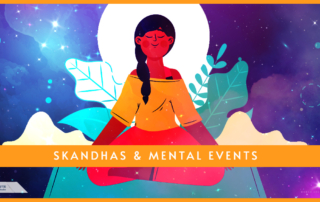Skandha & Mental Events
This excerpt is copyrighted material, please do not use or copy without written permission from Nitartha Publications. This is an excerpt from the sourcebook we use in our Mind & Its World IV class. Mind & Its World IV presents the path and result of foundational Buddhism. Students explore classifications of knowable object into specifically and generally characterized phenomena as well as the Sautrantika’s distinct presentation of the five aggregates. The path consists of calm abiding (samatha) and superior insight (vipashyana). SKANDHA & MENTAL EVENTS ĀCHĀRYA KELSANG WANGDI BENEFIT OF STUDYING Two benefits come from studying the five skandhas as a basis for the practice of

